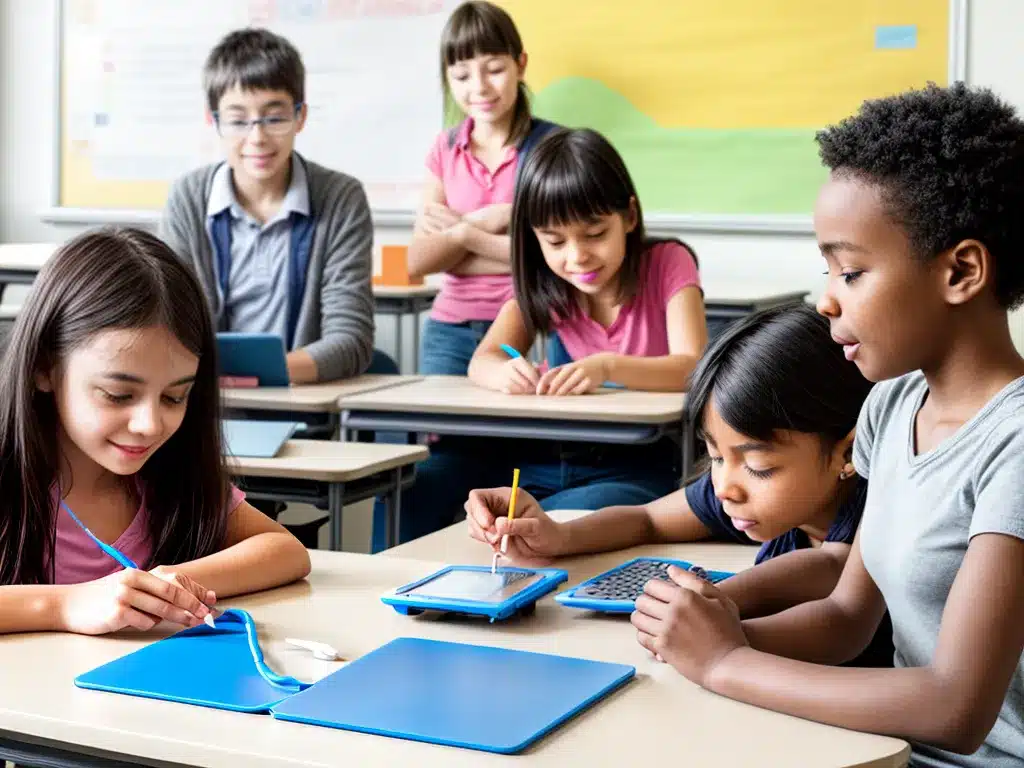
IoT in the Classroom: Preparing Students for the Future
Introduction
The Internet of Things (IoT) is transforming many industries, including education. IoT refers to the billions of internet-connected devices that collect and share data. When leveraged properly in the classroom, IoT can engage students in new ways and prepare them for the technology-driven world. As an educator, I am excited about the potential for IoT to create more meaningful learning experiences. In this article, I will explore how IoT can be integrated into the classroom and curriculum.
Potential Benefits of IoT in Education
Here are some of the key benefits that IoT offers for education:
Promotes Hands-On Learning
IoT enables students to interact directly with connected devices and systems. Instead of passively listening to lectures, students can gain first-hand experience with IoT technologies. For example, students could program and control robotics or use wearable devices like fitness trackers for data collection experiments. This type of active learning promotes problem-solving, collaboration, and other critical skills.
Connects Learning to Real-World Applications
In the workplace, understanding IoT and connected systems is becoming increasingly important. By bringing these technologies into the classroom, educators can help students see how abstract concepts are applied in real-world settings. Students are motivated when they can connect their schoolwork to careers and industries.
Allows Customized and Personalized Education
IoT devices generate huge amounts of data about their environments and users. All of this data provides opportunities to tailor instruction to individual students’ needs and interests. For example, fitness trackers could reveal when a student is most focused or most active during the day. Lessons could then be scheduled accordingly.
Promotes Creativity and Innovation
The very nature of IoT, which combines physical devices and software programming, fosters creativity. To build effective IoT systems, students need to think innovatively about design and problem-solving. They also gain valuable experience with project development and iteration.
Develops Technology and Data Literacy
An IoT-enabled classroom teaches students the nuts and bolts of connected technologies. From networking protocols to data analytics, students gain fluency with the technologies driving the modern world. These skills will help them in the future as consumers, workers, and citizens.
Challenges of Implementing IoT
While promising, integrating IoT does come with some challenges:
- Upfront costs: Purchasing IoT devices and infrastructure can get expensive, especially with tight education budgets.
- Learning curve: Both staff and students may require training before they can use IoT effectively. Without proper onboarding, the technology may go underutilized.
- Security risks: Any network-connected system is vulnerable to cyber threats. Schools will need to ensure solid cybersecurity measures are in place.
- Privacy concerns: Extensive data collection raises privacy issues that schools need to handle carefully and transparently.
- Maintenance: Managing a complex IoT system requires adequate IT resources. Maintenance costs also need to be planned for.
Preparing the Classroom for IoT Integration
If I want to implement IoT in my school, there are several key steps I would need to take:
Assess Infrastructure Needs
What types of devices do I want to use and what connectivity infrastructure is required? Creating an IoT network likely requires enhancing school WiFi access and capacity. New servers and software platforms may also be needed.
Analyze Data Responsibly
How will student data be collected, stored, used, and protected? Schools must craft responsible data policies before deploying IoT devices. Training staff on cybersecurity threats is also critical.
Allocate Budget and Resources
What funding sources can support initial IoT investments and ongoing management? How much training will staff need? Dedicated technical support is essential for maintaining an IoT system.
Update Curriculum and Assessments
Lessons and activities must be redesigned to leverage IoT capabilities. I would work with teachers from all disciplines to brainstorm ideas and make curriculum connections. Assessments may need to be updated to measure hands-on learning.
Engage the Community
Parents and other stakeholders should understand the benefits of using IoT as an educational tool. Addressing privacy concerns openly and transparently will be important.
IoT Applications for the Classroom
Here are a few specific ways I can envision using IoT devices and systems in my classroom:
Environmental Monitoring
Students can use IoT sensors to track temperature, humidity, air quality, and other environmental factors throughout the school. The collected data can then be analyzed in the classroom. Students might also design projects to reduce the school’s environmental impact.
Electronic Portfolios
Using wearable devices and smart badges, students can compile detailed portfolios demonstrating their attendance, participation, skill development, and achievements in each class. This provides a holistic picture of each student’s performance.
Immersive Lessons
Augmented and virtual reality experiences propel learning beyond textbooks. With the right hardware like smart glasses, students can be transported anywhere – from ancient Rome to the surface of Mars! These immersive lessons boost engagement and retention.
Automated Inventory
IoT-connected sensors placed throughout the classroom can scan and monitor resources and supplies in real-time. This allows me to take inventory and reorder materials promptly when supplies run low. Class time is never wasted waiting on deliveries.
Interactive Class Projects
The class can design IoT systems like hydroponics labs or weather stations. Building these systems teaches programming and electronics skills. Students also gain experience creating real-world solutions.
The Future with IoT
Integrating IoT devices and methodologies can modernize learning for students. While not without challenges, IoT unlocks exciting new potential in the classroom. With sound implementation, educators can leverage these technologies to deepen engagement, promote collaboration, and connect school to careers. IoT opens the door for students to take active ownership of their education while honing skills for lifelong success. I look forward to guiding students on this journey!












